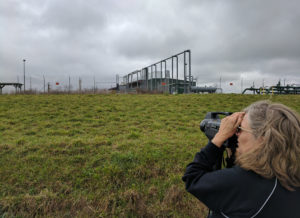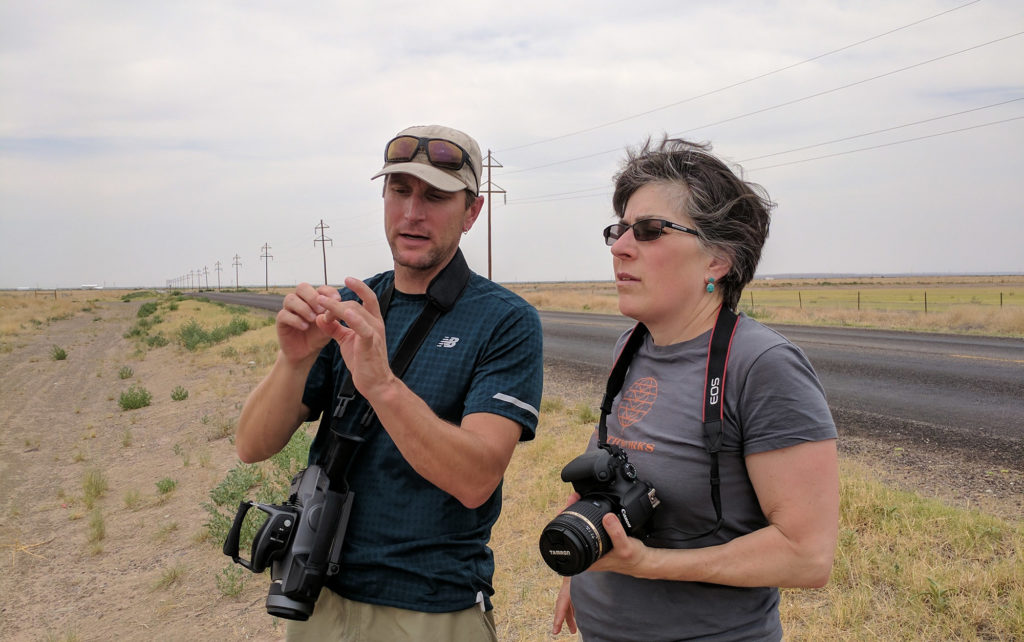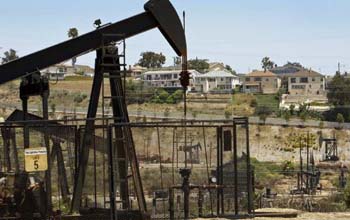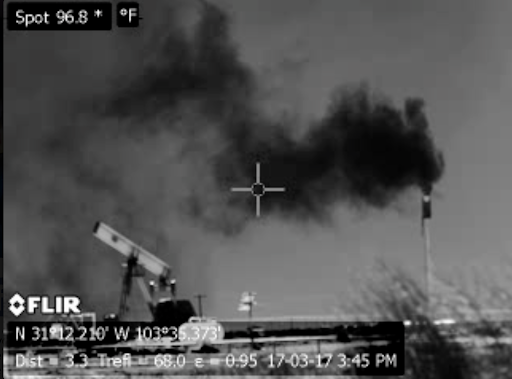Frequently Asked Questions About Earthworks’ Oil and Gas Field Investigations
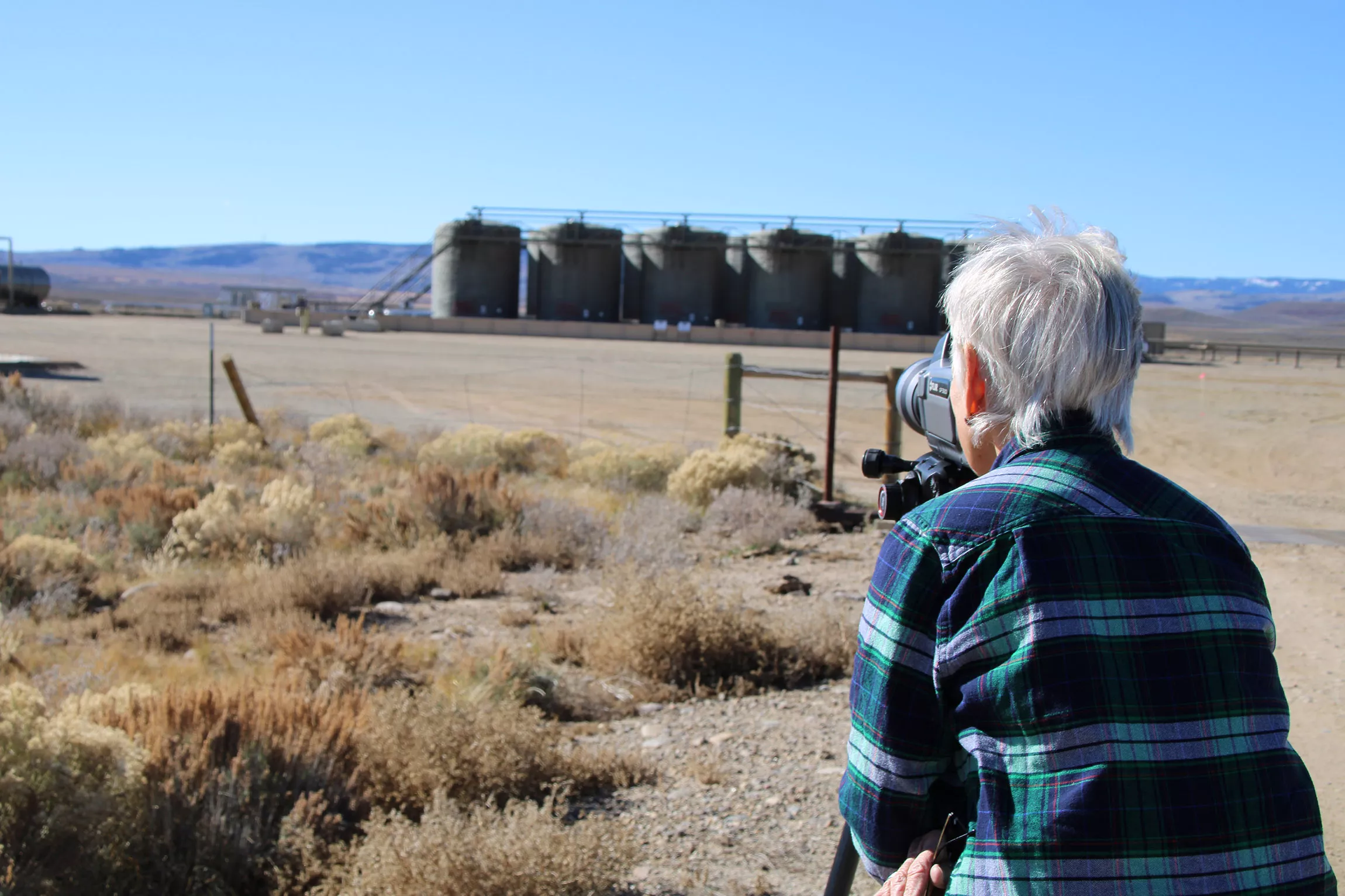
English | Español
Jump to:
- What are the goals of the Field Investigation team and how do you achieve them?
- Why is Earthworks qualified to document oil and gas pollution?
- Why are the optical gas imaging (OGI) videos important?
- Don’t your videos just show heat and steam?
- Isn’t air pollution just part of oil and gas operations?
- How do you know what’s in the emissions you film?
- How do you access oil and gas sites to film them?
- When do you file complaints about specific oil and gas operations?
1. What are the goals of the Field Investigation team and how do you achieve them?
Our top goals are to:
- Support frontline residents who are experiencing health problems related to air pollution from oil and gas operations and provide them with visible evidence of the pollution that they can use to call for the protections they deserve.
- Document the oil and gas industry’s impact on air, health, and the climate.
- Push regulators charged with protecting the public to take action to stop pollution and hold operators accountable.
- Demonstrate the need for a clean, just transition away from all fossil fuels to an energy economy based on renewables and conservation.
2. Why is Earthworks qualified to document oil and gas pollution?
For more than 25 years, Earthworks has been documenting the impacts of oil and gas operations nationwide through comprehensive research, involvement with frontline communities, and more recently with optical gas imaging (OGI) technology. We have a strong track record of credible, reliable work that we apply to advocate for energy policies and practices that protect health and the environment.
Earthworks collaborates with scientists, government agencies, regulators, and residents. All of our thermographers (OGI camera operators) receive the same training and certification through the Infrared Training Center (ITC) as the oil and gas industry and regulators to do the same work of detecting and documenting pollution. Our thermographers have spent hundreds of hours in the field filming a wide range of pollution sources and reviewing OGI footage. We have a highly qualified team to write about and publicize the resulting videos and related information.
3. Why are the optical gas imaging (OGI) videos important?
By making otherwise invisible pollution visible, our videos make a big difference in how impacted residents, the public, policymakers, and the media view oil and gas air pollution. These videos challenge industry to tell the truth and clean up its act.
The oil and gas industry and its proponents have misled the public by denying and downplaying its pollution and calling natural gas a “clean” energy source. For a long time, the industry has claimed it can contain methane emissions and other pollution, but in reality it hasn’t.
4. Don’t your videos just show heat and steam?
No. Our videos primarily show air pollution.
Earthworks’ FLIR (forward looking infrared) GF320 cameras are specifically designed to detect hydrocarbon and volatile organic compound (VOC) emissions. OGI cameras like the GF320 are calibrated to a narrow part of the electromagnetic spectrum where hydrocarbons absorb infrared light. As a result, the emissions become opaque so the camera can record them for us to see.
Earthworks’ thermographers (camera operators) have been trained and certified to properly use OGI to detect these gases. Our thermographers and field staff review each video before it’s published in order to ensure that it shows concerning emissions. We submit the videos to regulators charged with conducting inspections and issuing violations, and discuss our findings with them whenever possible.
5. Isn’t air pollution just part of oil and gas operations?
Many of the pollution events Earthworks films show uncontrolled, intense emissions and equipment leaks and failures. Are they all “normal”? Yes and no.
Yes: because oil and gas extraction, production, processing, and transmission are inherently polluting industrial activities. So, for many types of equipment and activities, operators obtain permits from state regulators so they can pollute within certain limits.
No: because equipment frequently malfunctions, causing pollution and often in violation of a permit. Also, even though operators have permits to pollute, those pollution levels still may harm health and definitely harm the climate. That pollution shouldn’t be passed off as “normal” and allowed to continue. Operators can and should capture the pollution they create, maintain their equipment, prevent emissions releases, and fix leaks and other problems quickly.
6. How do you know what’s in the emissions you film?
The FLIR GF320 has been specifically calibrated and independently tested to detect and visually record the presence of 20 volatile organic compound gases associated with oil and gas. Therefore, we know that at least some of the pollutants that the camera is calibrated to detect are present.
Based on air sampling and research by Earthworks and other organizations, emissions reporting by the industry, and air permits issued by states, we can also determine which VOCs are emitted by certain types of equipment and at different stages of development. Both scientists and public agencies have established that oil and gas wells and facilities emit a mix of dozens of health-harming and cancer-causing chemicals, such as benzene, toluene, ethylbenzene, and xylene (known as the BTEX chemicals) and formaldehyde.
Knowing specifically which VOCs are in the OGI videos, and at what concentrations, requires air sampling from within or very close to the pollution plume. In turn, this usually requires site access granted by the operators and additional resources so laboratories can analyze the samples. Although Earthworks, researchers, and other organizations have conducted a significant amount of air sampling, we cannot do so in most cases.
As part of their responsibility to oversee the industry and protect the public from pollution, regulators should require operators to conduct air monitoring of their operations and provide that information to the public–in particular to nearby residents who are impacted.
7. How do you access oil and gas sites to film them?
Earthworks’ field staff and camera operators work with residents who are interested in learning more about the potential pollution in their communities to identify sites of concern. We also conduct research to understand which operations are present in an area.
We work with willing landowners to access sites on their properties. Most often, we film pollution on public lands or from public roads open to everyone. Earthworks does not knowingly trespass in order to document pollution.
8. When do you file complaints about specific oil and gas operations?
We file complaints when we:
- Determine that a violation of state or federal regulations is potentially occurring and regulators and operators should investigate.
- Detect odors or experience health symptoms onsite, or are told by local residents that they’re experiencing health problems.
- See emissions that are clearly coming from equipment that shouldn’t be releasing them, such as an unlit flare, an open tank hatch, or a leaking valve.
- See pollution plumes that are traveling beyond the site or facility toward homes, schools, businesses, farms, and other places where people live, work, and play.
- Frontline community members request assistance from Earthworks staff in navigating complaint systems in their own states, so they can file their own.

